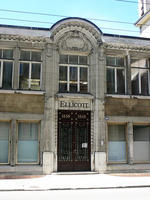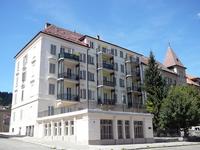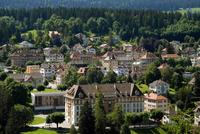You are in: Europe -> Switzerland -> La Chaux-de-Fonds / ... , and traditional search or Image Gallery will yield results of this site only
La Chaux-de-Fonds / Le Locle, watchmaking town planning
| Site number: | 1302 |
|
| Type of site: | Cultural | |
| Date: | 19th century | |
| Date of Inscription: | 2009 | |
| Location: | Europe, Switzerland, Canton Neuchâtel | |
Up to 75 images are shown here. Click on each for more details or on Image Gallery for more images.
Six official UN languages:
Arabic,
Chinese,
English,
French,
Russian,
Spanish
Other languages: Bulgarian, Dutch, Esperanto, Finnish, German, Hungarian, Indonesian, Italian, Japanese, Luxembourgish, Norwegian-bokmål, Polish, Sicilian
Other languages: Bulgarian, Dutch, Esperanto, Finnish, German, Hungarian, Indonesian, Italian, Japanese, Luxembourgish, Norwegian-bokmål, Polish, Sicilian
| Description: | "The site of La Chaux-de-Fonds / Le Locle watchmaking town-planning consists of two towns situated close to one another in a remote environment in the Swiss Jura mountains, on land ill-suited to farming. Their planning and buildings reflect watchmakers’ need of rational organization. Planned in the early 19th century, after extensive fires, the towns owed their existence to this single industry. Their layout along an open-ended scheme of parallel strips on which residential housing and workshops are intermingled reflects the needs of the local watchmaking culture that dates to the 17th century and is still alive today. The site presents outstanding examples of mono-industrial manufacturing-towns which are well preserved and still active. The urban planning of both towns has accommodated the transition from the artisanal production of a cottage industry to the more concentrated factory production of the late 19th and 20th centuries. The town of La Chaux-de-Fonds was described by Karl Marx as a “huge factory-town” in Das Kapital where he analyzed the division of labour in the watchmaking industry of the Jura." --WHMNet paraphrase from the description at WHC Site, where additional information is available. | |
| Le Locle is a municipality in the district of Le Locle in the canton of Neuchâtel in Switzerland. It is situated in the Jura mountains, a few kilometers from the city of La Chaux-de-Fonds. It is the third smallest city in Switzerland (in Switzerland a place needs more than 10,000 inhabitants to be considered a city). Le Locle, as a center of the Swiss watchmaking industry, is home to brands such as a very early maker, the Terrasse Watch Co.,and others such as Tissot, Ulysse Nardin and Zenith and has one of the world's premier horological museums, the Musée d'Horlogerie du Locle, Château des Monts, located in a 19th century country manor on a hill north of the city. Restored historic underground mills (grainmill, oilmill, sawmill) can be seen in a cave located about one kilometer west of the city center. The watchmaking cities of Le Locle and La Chaux-de-Fonds have jointly received recognition from UNESCO for their exceptional universal value. The Site's planning consists of two small cities located close to each other in the mountainous environment of the Swiss Jura. Due to the altitude (1'000 meters up) and the lack of water (porous sandstone underground) the land is ill suited to farming. Planning and buildings reflect the watch making artisans need of rational organization. Rebuilt in the early 19th Century, after extensive fires, both towns owe their survival to the manufacturing and exports of watches, to which, in the 20th Century, was added the minute micro mechanicalindustry. Along an open-ended scheme of parallel strips on which residential housing and workshops are intermingled, their town planning reflects the needs of the local watch making culture that dates back to the 17th century, which still alive today. Both agglomerations present outstanding examples of mono-industrial manufacturing-towns, which are still well preserved and active. Their urban planning has accommodated the transition from the artisans’ production of a cottage industry to the more concentrated factory production of the late 19th and 20th centuries. Already Karl Marx described La Chaux-de-Fonds as a “huge factory-town” in Das Kapital, where he analyzed the division of labour in the watch making industry of the Jura. --Wikipedia. Text is available under the Creative Commons Attribution-ShareAlike License. | ||
| Source: | http://whc.unesco.org/en/list/1302 | |
| Reference: | 1. UNESCO World Heritage Center, Site Page. | |


































